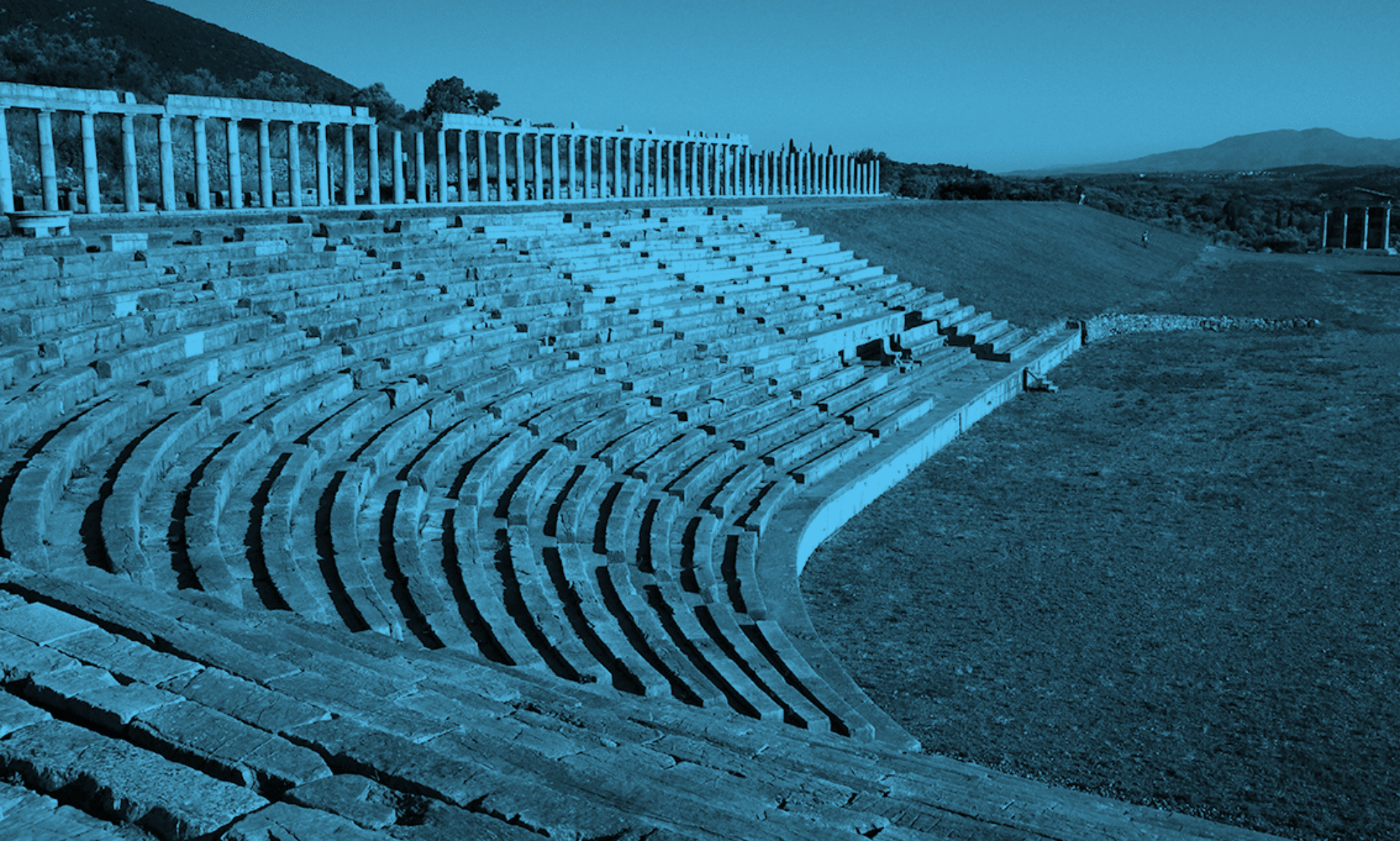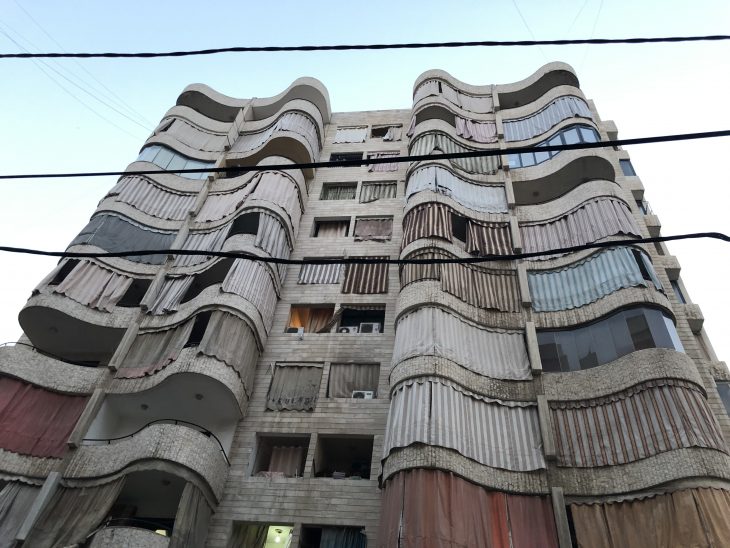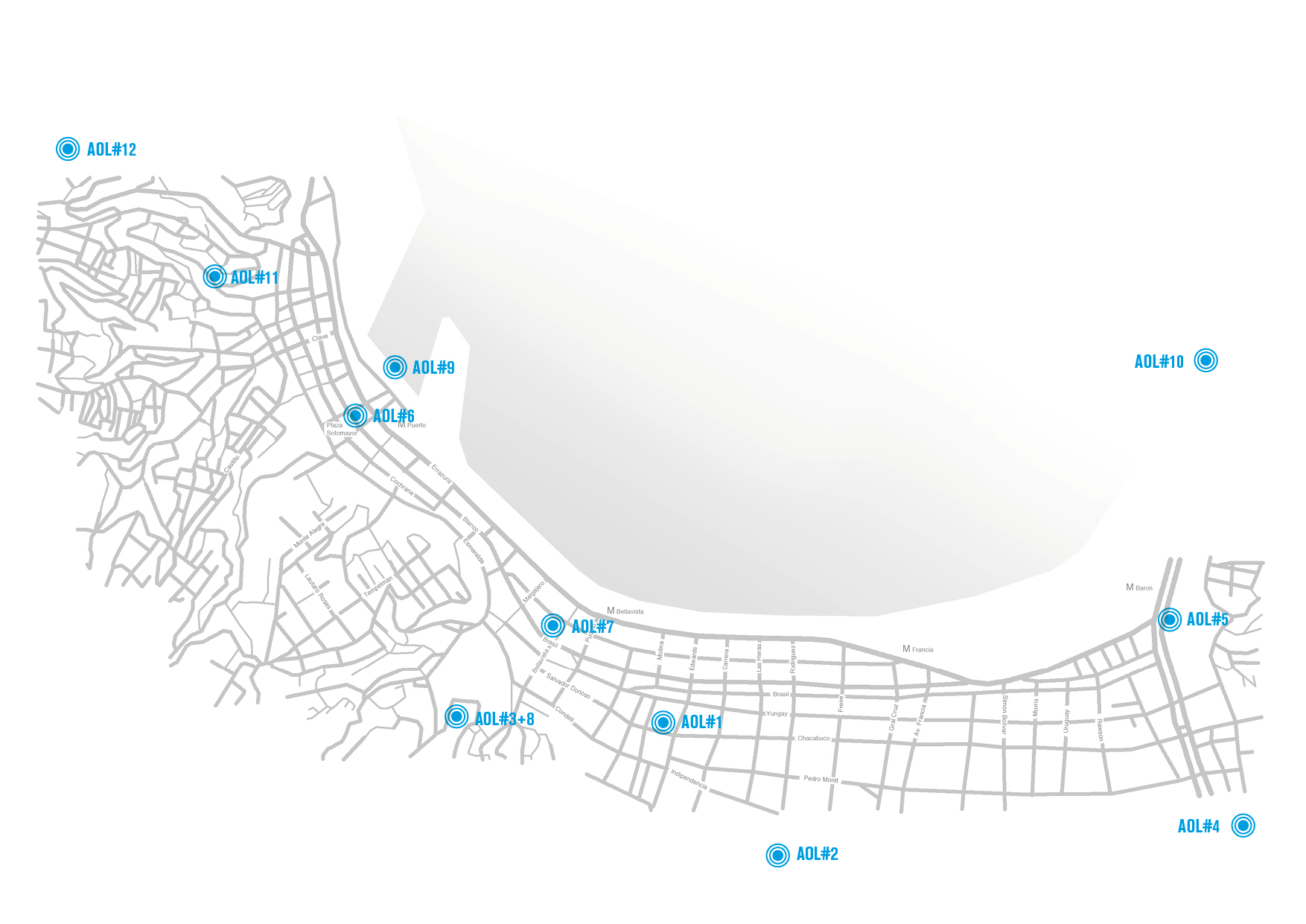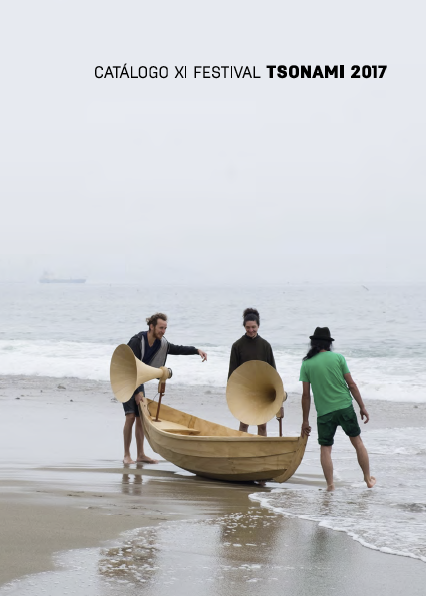


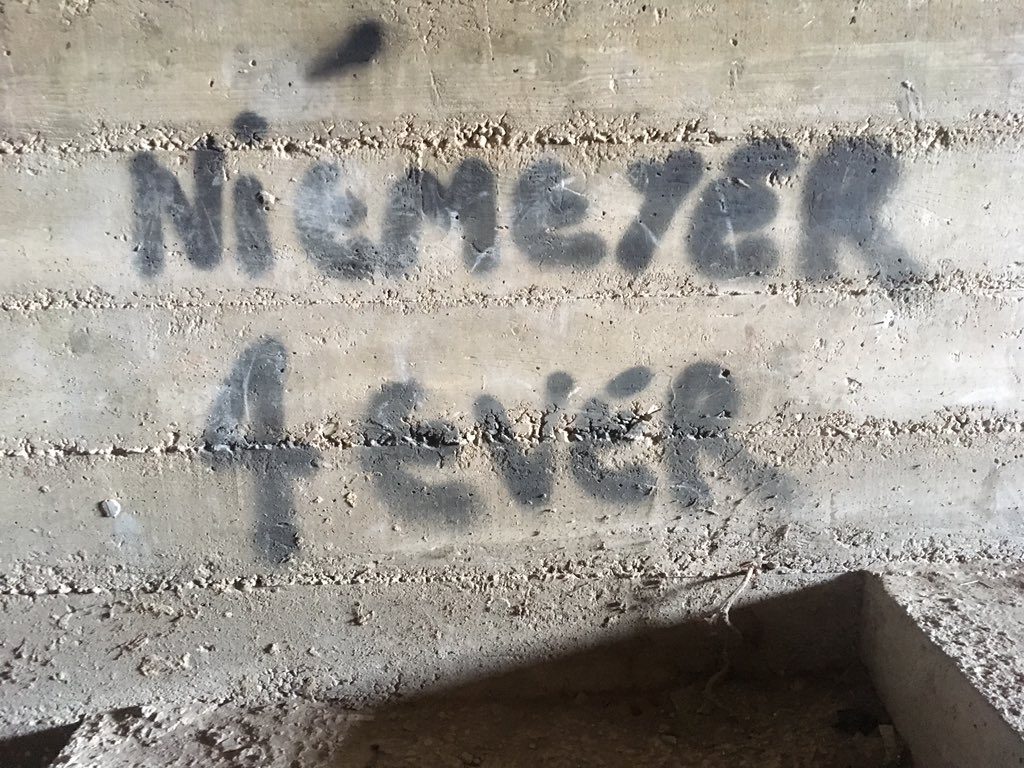
Architecture, the city and its scale


Measuring over 600,000 square metres, Oscar Niemeyer’s Rachid Karame Fair and Exposition site was conceived as more than just a recreational or commercial space for the city of Tripoli in Lebanon. Looking at Tripoli from the air today the elliptical area of the project recalls a petri dish. Stamped into the urban tissue, a 1.1km long ellipse is filled with prototypical architectural forms, such as parabolic arches and faceted cones, with a vast plane of concrete seemingly afloat in its amniotic landscape. Intended programmes for the buildings were to include an exhibition hall, national pavilion, outdoor concert stage and a helipad. Attempting to present a new idea of the city, the project set out to structure a synthesis of work, life and culture, functioning together in an open civic landscape. With construction interrupted by the Lebanese civil war, all the primary structures were completed, yet none were fitted out. Therefore, what remains is a bare, unadorned yet almost complete representation of all the main elements of the original Niemeyer plan.
(Architecture, the city and its scale: Oscar Niemeyer in Tripoli, Lebanon by Adrian Lahoud, The Journal of Architecture Volume 18 Number 6 >>> see full paper)
Activation of the natural acoustics of the ‘experimental theater dome’ at the Rachid Karami International Fair build designed by legendary Brazilian architect Oscar Niemeyer in 1963.
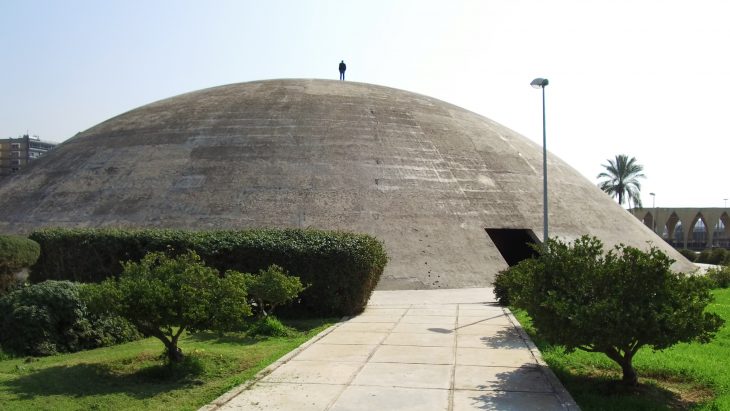
Connecting Resonances – Acts of Listening Beirut
AoL at Tsonami 2017
During the last 10 years our organization Tsonami has been working around the topics of sound and city with the aim of promoting the development of critical artistic processes, using the sonic imagination as a way of addressing social, acoustic, geographical and territorial complexities of Valparaiso.
The 11th edition of the festival hosted and co-produce the Acts of Listening project in Valparaiso from 21st of November – 9th December 2017.
Read the logbook of our multiple activities here in reverse chronological order.
Acts of Listening schedule
Wednesday December 6th
16:30
AOL#1
Nicolas Spencer, Barbara Gonzalez, Paul Gründorfer
La picá del Zombie
Plaza Simón Bolivar
Thursday December 7th
11:00-19:00 (installation all day)
AOL#2
Christian Espinoza
Listening parasites #1
interseccion de escalera Tte Pinto y Pasaje Ruskin (Intersection of Stair Tte Pinto & passagem Ruskin) Cerro Mariposa
12:00-13:00
Franziska Windisch
preparation workshop for Encounters (AOL#3 + AOL#8)
meeting point: PCDV entry
15:00-16:00
AOL#3
Franziska Windisch
Encounters I
meeting point: PCDV entry
Friday December 8th
11:00-13:00 (installation all day)
AOL#4
Christian Espinoza
Listening parasites #2
Entrance Escalator Polanco, Almirate Simpson
16:00-19:00
AOL#5
Florian Tuercke
Urban Audio micro.chills
Estation Baron
Saturday December 9th
14:00
AOL#6
Florian Tuercke
Opening of Museo Tsonoro
Plaza Sotomayor
16:00-19:00
AOL#7
Florian Tuercke
Urban Audio micro.chills
Plaza Brasil
18:00
AOL#8
Franziska Windisch
Encounters II
meeting point: PCDV entry
Sunday December 10th
11:00-14:00
AOL#9
barco de cueca experimental
meeting point: Muelle Prat
14:30
AOL#10
Nicolas Spencer, Barbara Gonzalez, Paul Gründorfer
La picá del Gaviota
Caleta Portales
all the time on apointement
AOL#11+12
René Rissland
Secret Moments of Listening I + II
(individual tour, times flexible, please approach rene)
Poblacion Marquez + Cementerio de Playa Ancha
(click to enlarge)
Programme: Acts of Listening during Tsonami
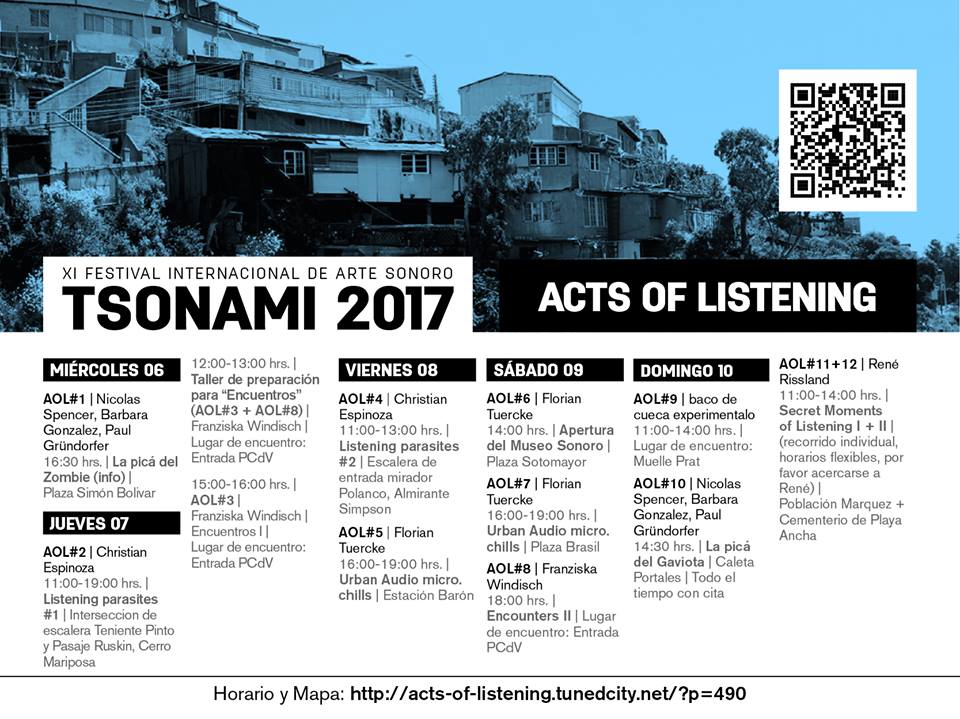
Uneasy Listening
It was already in 2007, that Tim Ingold suggested to abandon the term soundscape. Instead of using an objectified idea of ‘(land)scape’ we perceive, he proposed ‘weather’ as a model of thinking sound – as a condition within we exist rather as a phenomenon we observe from a distance.
“[…] does the tree falling in a storm make any sound if there is no creature present with ears to hear it? Does sound consist of vibrations in the medium? Or is it something we register inside our heads? Is it a phenomenon of the material world or of the mind? Is it ‘out there’ or ‘in here’? Can we dream it? It seems to me that such questions are wrongly posed, in so far as they set up a rigid division between two worlds, of mind and matter […] Sound, in my view, is neither mental nor material, but a phenomenon of experience – that is, of our immersion in, and commingling with, the world in which we find ourselves.” *
Looking back at the past 10 years and the immense growth of the field of sound studies – countless books were published, conferences held and festivals established, territories were marked and claimed. Mechanisms of knowledge production and mediation are often reproduced without questioning, of course due to limitations and latencies within institutional and formal frameworks.
Initiated by Fernando Godoy and Carsten Stabenow as a collaboration for Tsonami Festival and Tuned City – Acts of Listening was taking off exactly from these positions: sound as contextual immersive assumption and listening as a constant interaction. The group has been thinking and exploring new formats of artistic research and production, emerging from – and imbedded in – the social dynamics of the actual place but trying to develop an agency as independent as possible from institutional expectations.
The Acts of Listening group circled around Tsonami Festival (and Tuned City) like a satellite, injecting, adding, commenting, extending, blurring, questioning, and challenging the proceedings. Following ideas of Michel de Certeau’s The Practice of Everyday Life – in which city becomes a city only in the moment it is used, in the moment of ‘acting‘ within – the group tried to utilize improvisation as a meta-learning system, a way of strategic thinking which has to incorporate social latency and diverse adverse effects as feedback process in order to discover new ways of doing. The general approach was to avoid individual recipes or to fit artistic ideas into a formal context and expectations… but instead leave the protected zones and safe places, take risk, sketch and prototype ideas and directly confront the public and ourselves with their consequences.
In the context of a sound art festival – to objectify sound – carries the risk to lose touch with surrounding reality.
“We may, in practice, be anchored to the ground, but it is not sound that provides the anchor. […] the sweep of sound continually endeavours to tear listeners away, causing them to surrender to its movement. It requires an effort to stay in place. And this effort pulls against sound rather than harmonizing with it.” * A certain reading of Ingold might be very up-to-date. Listening is not pausing and contemplating, opening up to acoustic environment and letting the information in – sound is a force and we are already enclosed, we can’t distance ourselves – we’re floating within, fighting against – listening is struggle as existence.
These days we ask ourselves more often how to react to the developments in the world, reflecting the relevance of the things we do in our privileged contexts. There is an urgency to progress from ‘observing and sensing’ to ‘responding and acting’ – environmental, political, and general global crises are nothing we can objectify or remain detached from – we are in the middle of it, we have to act, refuse, develop alternatives. Otherwise the storm will blow us down like trees – and this time definitely no creature with ears will be present to hear it.
* Tim Ingold, Against Soundscape, in Autumn Leaves edited by Angus Carlyle, Double Entendre, Paris, 2007
